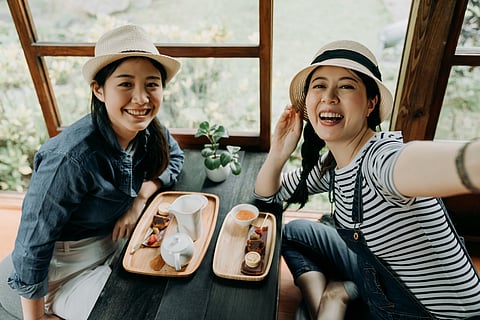
- Destinations
- Experiences
- Stay
- What's new
- Editor’s Picks
- Responsible Tourism
- CampaignsCampaigns
- Subscribe

The famous samurai, Miyamoto Musashi, once said, "The way of the warrior is found in death." This quote is a reminder that life is too short to fret about the bygones and the worries of the future and should be lived to its fullest. The Japanese believe in travelling and living new experiences every day, which is substantiated in their art and writings. There's much to learn about the culture of setting foot on the unknown through Japanese works, but there's a much better way to learn this lesson: experience it for yourself.
How do you go about experiencing these things in the country when you have no idea where to start? Sure, you can start by yourself and find your way, but won't it be amazing if you have a rough list by your side? Even a Samurai needs a guide now and then, and we are mere travellers on the land with a limited visa period.
Sumo is a traditional Japanese sport that dates back to over 1,500 years ago. It is a form of wrestling where two large men clad in loincloths try to push each other out of a circular ring or make each other touch the ground with anything other than their feet. Sumo wrestlers, or rikishi, follow a strict regimen of training, diet, and lifestyle that is based on ancient customs and rituals.
You can visit the Ryogoku Kokugikan, the main sumo arena in Tokyo, where tournaments are held six times a year. It's a great opportunity to experience the excitement of this traditional Japanese sport. Another option is to visit a sumo stable, where Rikishi live and practice, and observe their daily routine. This can be a unique and fascinating cultural experience for anyone interested in sumo wrestling.
The tea ceremony, or sado, is a quintessentially Japanese art that expresses the spirit of harmony, respect, purity, and tranquillity. It is a ritualised way of preparing and serving green tea, matcha, and traditional sweets or wagashi. The tea ceremony involves various utensils, gestures, and etiquette that reflect the aesthetic and philosophical values of the host and the guests. You can experience the tea ceremony at various venues in Osaka, such as the Maikoya Osaka Cultural Experience Center, where you can learn about the history and culture of sado from a professional tea master.
Ninja and samurai are two iconic figures of Japanese history and culture. Ninjas were covert agents specialising in espionage, sabotage, and assassination during the feudal era. Samurai were noble warriors who followed a strict code of honour and loyalty called bushido. You can experience being a ninja or samurai in Kyoto, the former capital of Japan and the centre of its cultural heritage. You can visit the Ninja Museum of Igaryu, where you can learn about the secrets and skills of ninjas, try on ninja costumes, and throw shuriken (ninja stars). You can also visit the Samurai Kembu Theater, where you can watch a performance of kembu, a sword dance that expresses the spirit of samurai, and even take a lesson from a kembu master.
Taiko is a traditional Japanese percussion instrument that consists of various types of drums. Taiko drumming is a dynamic and powerful art form that combines rhythm, movement, and expression. It is often performed at festivals and ceremonies to create a festive atmosphere and invoke the gods. You can learn taiko drumming in Kobe, a port city known for its multiculturalism and cosmopolitanism. You can join a taiko workshop at the Kobe Taiko Lab6, where you can learn the basics of taiko playing from an experienced instructor.
Washi is a type of handmade paper that is made from plant fibres such as mulberry, bamboo, and hemp. Washi paper is durable, flexible, and versatile, and it is used for various purposes, such as writing, painting, origami, calligraphy, and crafts. Washi paper-making is a traditional craft that has been passed down for centuries in Japan. You can try washi paper-making in Fukuoka, a famous city for its food culture and natural beauty. You can visit the Kyushu Washi Center, where you can learn about the history and process of washi paper-making from a local artisan.
Sushi is one of the most popular and representative dishes of Japanese cuisine. It is a dish that consists of vinegared rice topped or wrapped with various ingredients such as raw fish, seafood, vegetables, and eggs. Sushi-making is an art that requires skill, creativity, and freshness. You can buy fish and make sushi in Sapporo, the capital of Hokkaido, renowned for its seafood quality and variety. You can visit the Nijo Market, where you can buy fresh fish from local vendors, and then join a sushi-making class at the Sapporo Cooking School, where you can learn how to make sushi from a professional chef.
Waxed food, or shokuhin sanpuru (food samples), are realistic replicas of food dishes made from plastic or wax. They are often displayed in restaurant windows or showcases to attract customers and show them what they can order. Waxed food making is a unique and fun craft that requires precision, patience, and imagination. You can create waxed food in Tokyo, the capital and largest city of Japan, which offers a wide range of culinary options and experiences. You can visit the Ganso Shokuhin Sample-ya, where you can make waxed food, such as ramen, tempura, or ice cream, and take them home as souvenirs.
